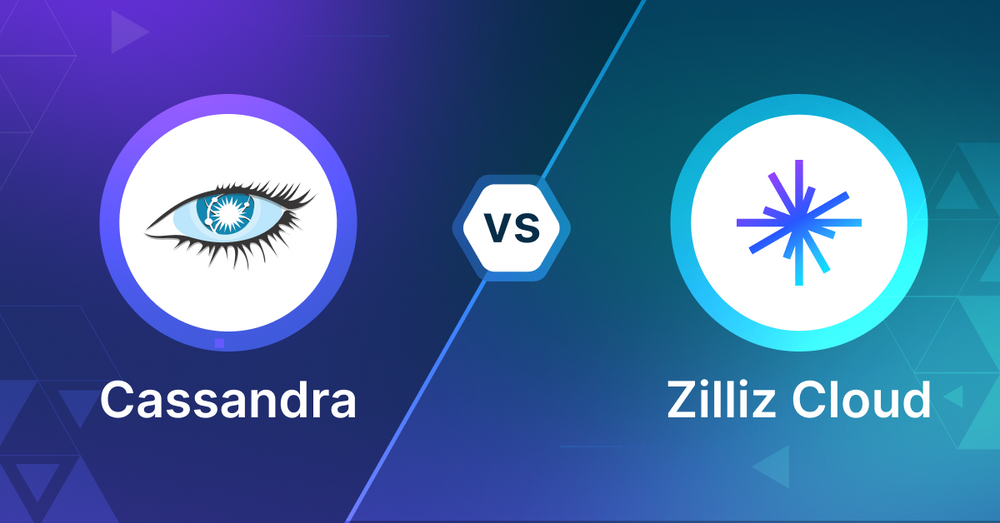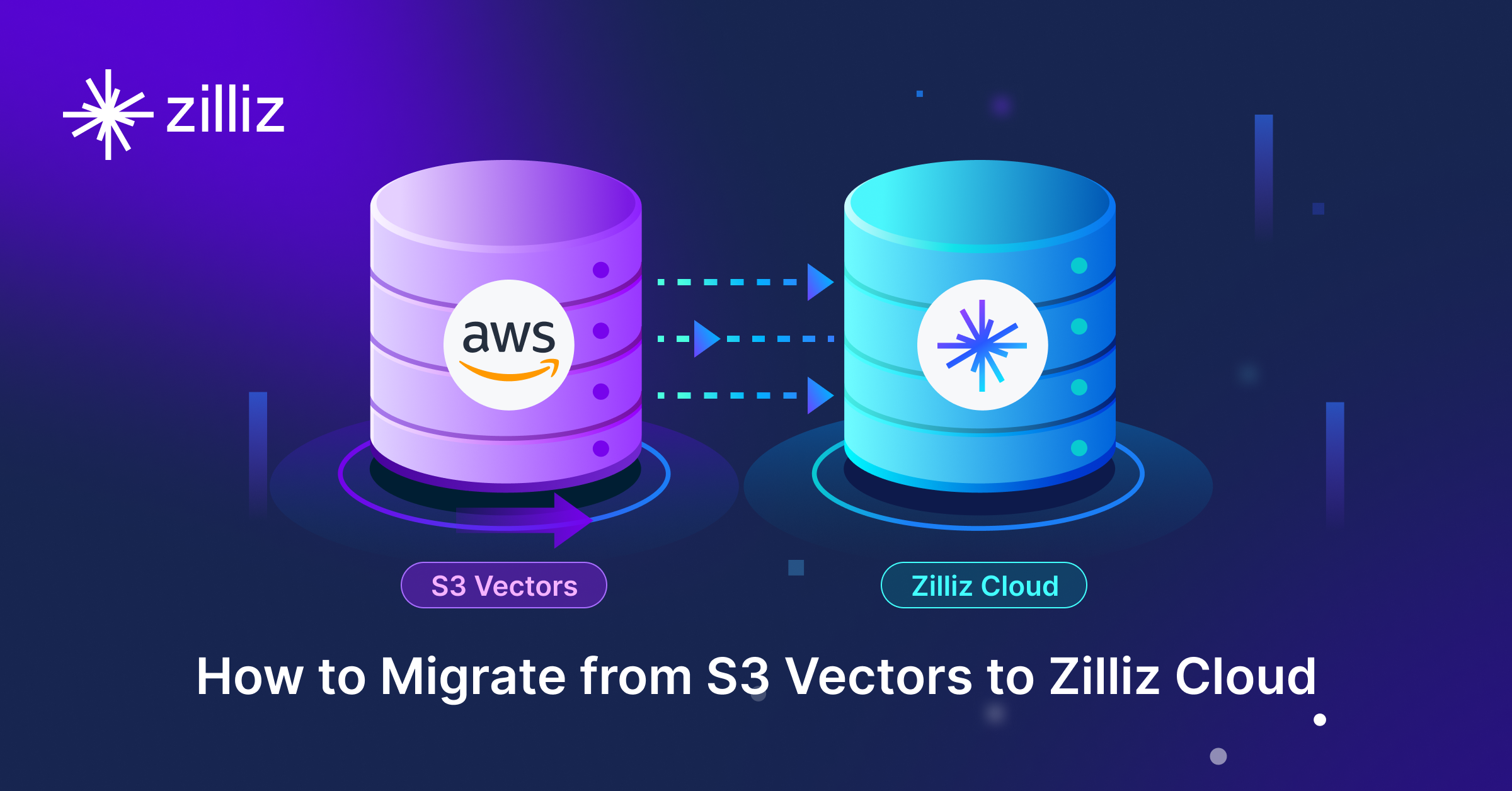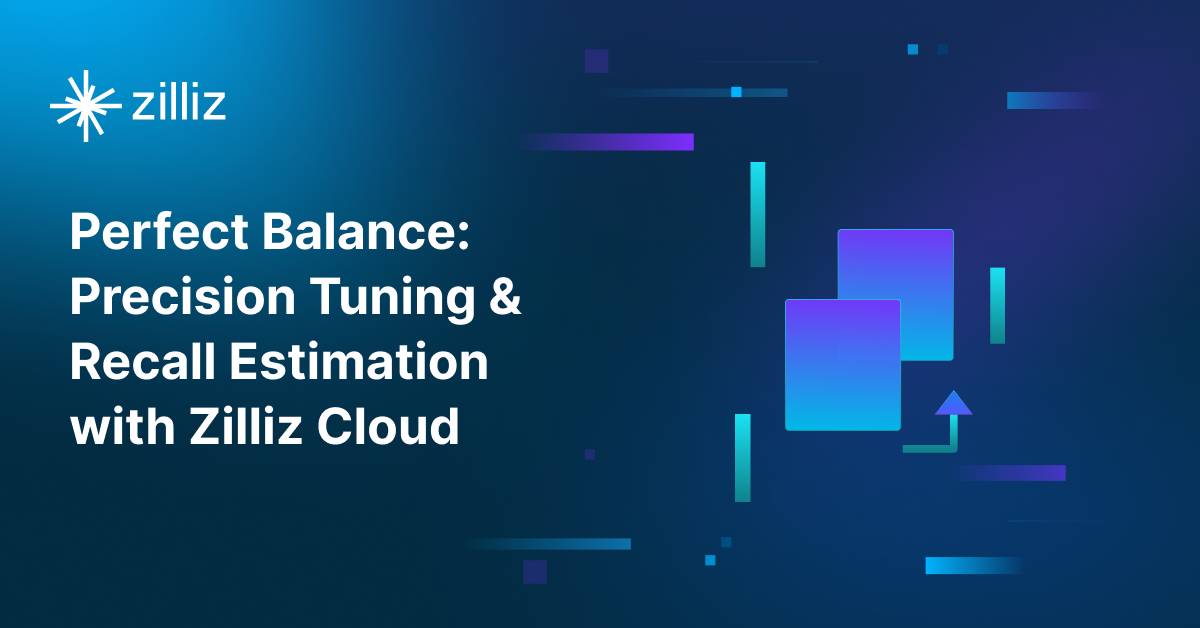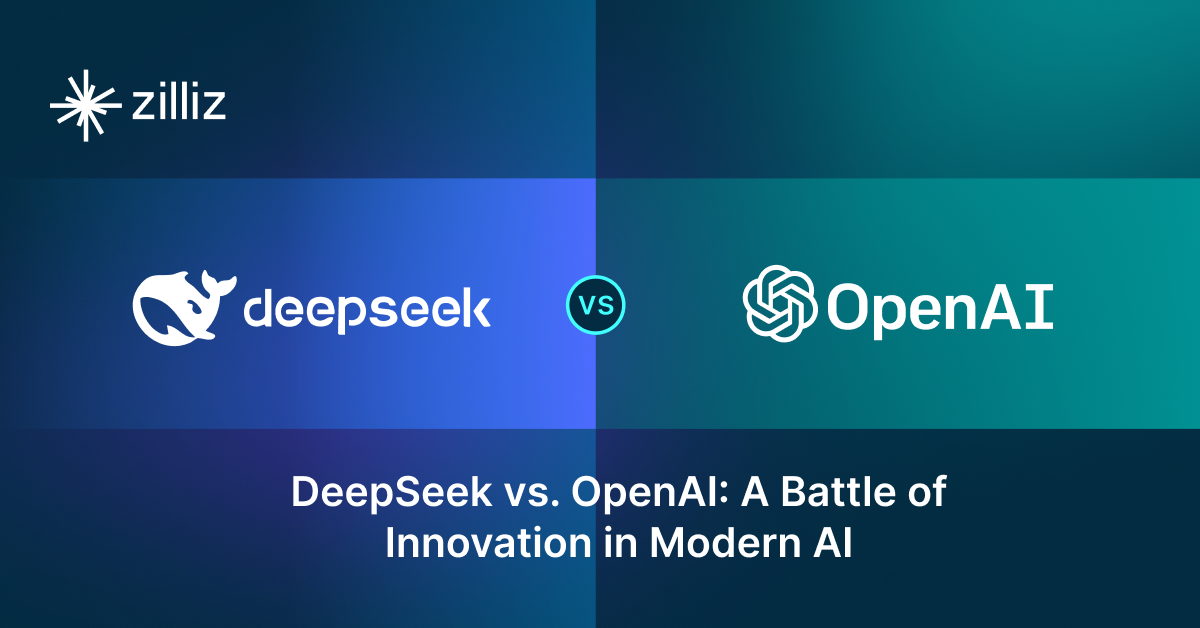Apache Cassandra vs Zilliz Cloud: Choosing the Right Vector Database for Your AI Apps

Introduction
As artificial intelligence continues to redefine this data-driven world, the need for robust vector databases that can handle complex data structures like vector embeddings is becoming increasingly evident. This blog will introduce and compare two notable databases: Apache Cassandra and Deep Lake. Each offers distinctive approaches to handling vector embeddings essential for AI applications.
What is a Vector Database?
Before we compare Apache Cassandra vs Zilliz Cloud, let's first explore the concept of vector databases.
A vector database is specifically designed to store and query high-dimensional vectors, which are numerical representations of unstructured data. These vectors encode complex information, such as text's semantic meaning, images' visual features, or product attributes using machine learning models. By enabling efficient similarity searches, vector databases play a pivotal role in AI applications, allowing for more advanced data analysis and retrieval.
Vector databases have been adopted in many use cases, including e-commerce product recommendations, content discovery platforms, anomaly detection in cybersecurity, medical image analysis, and natural language processing (NLP) tasks. They also play a crucial role in Retrieval Augmented Generation (RAG), a technique that enhances the performance of large language models (LLMs) by providing external knowledge to reduce issues like AI hallucinations.
There are many types of vector databases available in the market, including:
- Purpose-built vector databases such as Milvus, Zilliz Cloud (fully managed Milvus)
- Vector search libraries such as Faiss and Annoy.
- Lightweight vector databases such as Chroma and Milvus Lite.
- Traditional databases with vector search add-ons like Apache Cassandra
Understanding Apache Cassandra
Apache Cassandra is an open-source, distributed NoSQL database system designed to handle massive amounts of data across many servers with no single point of failure. It was originally developed to efficiently handle large amounts of structured and semi-structured data across many nodes. Cassandra is known for its high scalability, fault tolerance, and ability to operate in distributed environments with minimal downtime or performance degradation.
With the release of Cassandra 5.0, Apache Cassandra is evolving beyond its core functionality as a NoSQL database to support vector embeddings and vector search. Cassandra's vector search functionality is built on its existing architecture. It allows users to store vector embeddings alongside other data and perform similarity searches. This integration enables Cassandra to support AI-driven applications while maintaining its strengths in handling large-scale, distributed data.
A key component of Cassandra's vector search is Storage-Attached Indexes (SAI). SAI is a highly scalable and globally distributed index that adds column-level indexes to any vector data type column. It provides unparalleled I/O throughput for databases using Vector Search and other search indexing. SAI offers extensive indexing functionality, capable of indexing both queries and content (including large inputs like documents, words, and images) to capture semantics.
Vector Search is the first instance of validating SAI's extensibility, leveraging its new modularity. This Vector Search and SAI combination enhances Cassandra's capabilities in handling AI and machine learning workloads, making it a strong contender in the vector database space.
Zilliz Cloud: Overview and Core Technology
Zilliz Cloud is a fully managed vector database service built on top of the open-source Milvus engine. It helps developers and organizations to handle large scale AI applications by storing, managing and searching vector embeddings efficiently. It takes care of infrastructure for you, so you can focus on building AI features instead of managing databases.
One of the key advantages of Zilliz Cloud is the automatic performance optimization. The system has AutoIndex technology which will choose the best indexing method for your data and use case. So you don’t have to spend time tuning parameters or comparing different index types. The platform also uses IVF (Inverted File) and graph-based techniques to speed up similarity search across large datasets.
The platform has enterprise features. You can deploy your vector databases across AWS, Azure or Google Cloud, with options to use Zilliz’s fully managed service or bring your own cloud account (BYOC). For organizations that handle sensitive data, Zilliz Cloud has security controls like encryption, access management and compliance tools. The system also supports different consistency levels so you can balance between fast updates and strong data consistency based on your needs.
Cost management is another important aspect of Zilliz Cloud. The platform uses tiered storage to automatically move less accessed data to cheaper storage options, so you can reduce cost without affecting performance. You can also choose compute resources that match your workload - for example, use more powerful instances for heavy processing tasks and lighter ones for simple queries. This flexibility helps you to optimize your spending while maintaining good performance.
For AI applications that need to search different types of data together, Zilliz Cloud supports hybrid search. You can search across text embeddings, image vectors and other data types in a single query. The platform also supports various similarity metrics like Cosine, Euclidean and Inner Product so it’s suitable for different machine learning models and use cases. As your data grows, the system can scale horizontally by adding more resources automatically so you can maintain good performance even under heavy workload.
Key Differences
Search Methodology Cassandra uses Storage-Attached Indexes (SAI) for vector search, integrating vector capabilities into its existing NoSQL architecture. SAI provides column-level indexing for vector data types and supports both query and content indexing.
Zilliz Cloud employs AutoIndex technology to automatically select optimal indexing methods. It uses IVF and graph-based techniques for similarity searches, supporting multiple similarity metrics (Cosine, Euclidean, Inner Product).
Data Handling Cassandra handles structured and semi-structured data across distributed nodes. Vector embeddings are stored alongside other data types, maintaining consistency in a distributed environment.
Zilliz Cloud enables hybrid search across different data types (text embeddings, image vectors) in single queries. It offers flexible consistency levels to balance between update speed and data integrity.
Scalability and Performance Cassandra distributes data across multiple servers with no single point of failure. Its SAI architecture provides high I/O throughput for vector searches while maintaining distributed data handling capabilities.
Zilliz Cloud scales horizontally with automatic resource allocation. It uses tiered storage to optimize performance, moving less-accessed data to cheaper storage options without impacting search speed.
Management and Costs Cassandra requires manual setup and maintenance of infrastructure. As an open-source solution, primary costs are infrastructure and operational.
Zilliz Cloud is fully managed, handling infrastructure maintenance and optimization. Costs include service fees plus cloud infrastructure (AWS, Azure, Google Cloud), with options to use their managed service or BYOC (Bring Your Own Cloud).
Security Both platforms offer enterprise-grade security. Cassandra provides traditional database security features, while Zilliz Cloud includes encryption in transit and rest, backup and recovery, and extensive RBAC.
When to Choose Each
Choose Apache Cassandra when you need a distributed NoSQL database with vector search and already use Cassandra in your stack or want full control over your infrastructure. Its SAI architecture is good for large companies that handle massive amounts of structured data across multiple nodes and want to add AI capabilities while keeping their existing database setup.
Choose Zilliz Cloud when you want a fully managed vector database service with minimal operational overhead. It’s good for teams that need quick deployment of vector search, automatic performance optimization and flexible scaling across major cloud providers, especially if you’re building new AI applications without existing database constraints.
Summary
Cassandra is good for distributed data with integrated vector search through SAI, high scalability and fault tolerance for companies that want full control. Zilliz Cloud is good for managed service, automatic optimization and hybrid search. Choose based on your infrastructure preference (self-managed vs fully managed), existing tech stack, team expertise and specific requirements for vector search and scaling.
Read this to get an overview of Apache Cassandra and Zilliz Cloud but to evaluate these you need to evaluate based on your use case. One tool that can help with that is VectorDBBench, an open-source benchmarking tool for vector database comparison. In the end, thorough benchmarking with your own datasets and query patterns will be key to making a decision between these two powerful but different approaches to vector search in distributed database systems.
Using Open-source VectorDBBench to Evaluate and Compare Vector Databases on Your Own
VectorDBBench is an open-source benchmarking tool for users who need high-performance data storage and retrieval systems, especially vector databases. This tool allows users to test and compare different vector database systems like Milvus and Zilliz Cloud (the managed Milvus) using their own datasets and find the one that fits their use cases. With VectorDBBench, users can make decisions based on actual vector database performance rather than marketing claims or hearsay.
VectorDBBench is written in Python and licensed under the MIT open-source license, meaning anyone can freely use, modify, and distribute it. The tool is actively maintained by a community of developers committed to improving its features and performance.
Download VectorDBBench from its GitHub repository to reproduce our benchmark results or obtain performance results on your own datasets.
Take a quick look at the performance of mainstream vector databases on the VectorDBBench Leaderboard.
Read the following blogs to learn more about vector database evaluation.
Further Resources about VectorDB, GenAI, and ML
- Introduction
- What is a Vector Database?
- Understanding Apache Cassandra
- Zilliz Cloud: Overview and Core Technology
- Key Differences
- When to Choose Each
- Summary
- Using Open-source VectorDBBench to Evaluate and Compare Vector Databases on Your Own
- Further Resources about VectorDB, GenAI, and ML
Content
Start Free, Scale Easily
Try the fully-managed vector database built for your GenAI applications.
Try Zilliz Cloud for FreeKeep Reading

Migrating from S3 Vectors to Zilliz Cloud: Unlocking the Power of Tiered Storage
Learn how Zilliz Cloud bridges cost and performance with tiered storage and enterprise-grade features, and how to migrate data from AWS S3 Vectors to Zilliz Cloud.

Balancing Precision and Performance: How Zilliz Cloud's New Parameters Help You Optimize Vector Search
Optimize vector search with Zilliz Cloud’s level and recall features to tune accuracy, balance performance, and power AI applications.

DeepSeek vs. OpenAI: A Battle of Innovation in Modern AI
Compare OpenAI's o1 and o3-mini with DeepSeek R1's open-source alternative. Discover which AI model offers the best balance of reasoning capabilities and cost efficiency.
The Definitive Guide to Choosing a Vector Database
Overwhelmed by all the options? Learn key features to look for & how to evaluate with your own data. Choose with confidence.